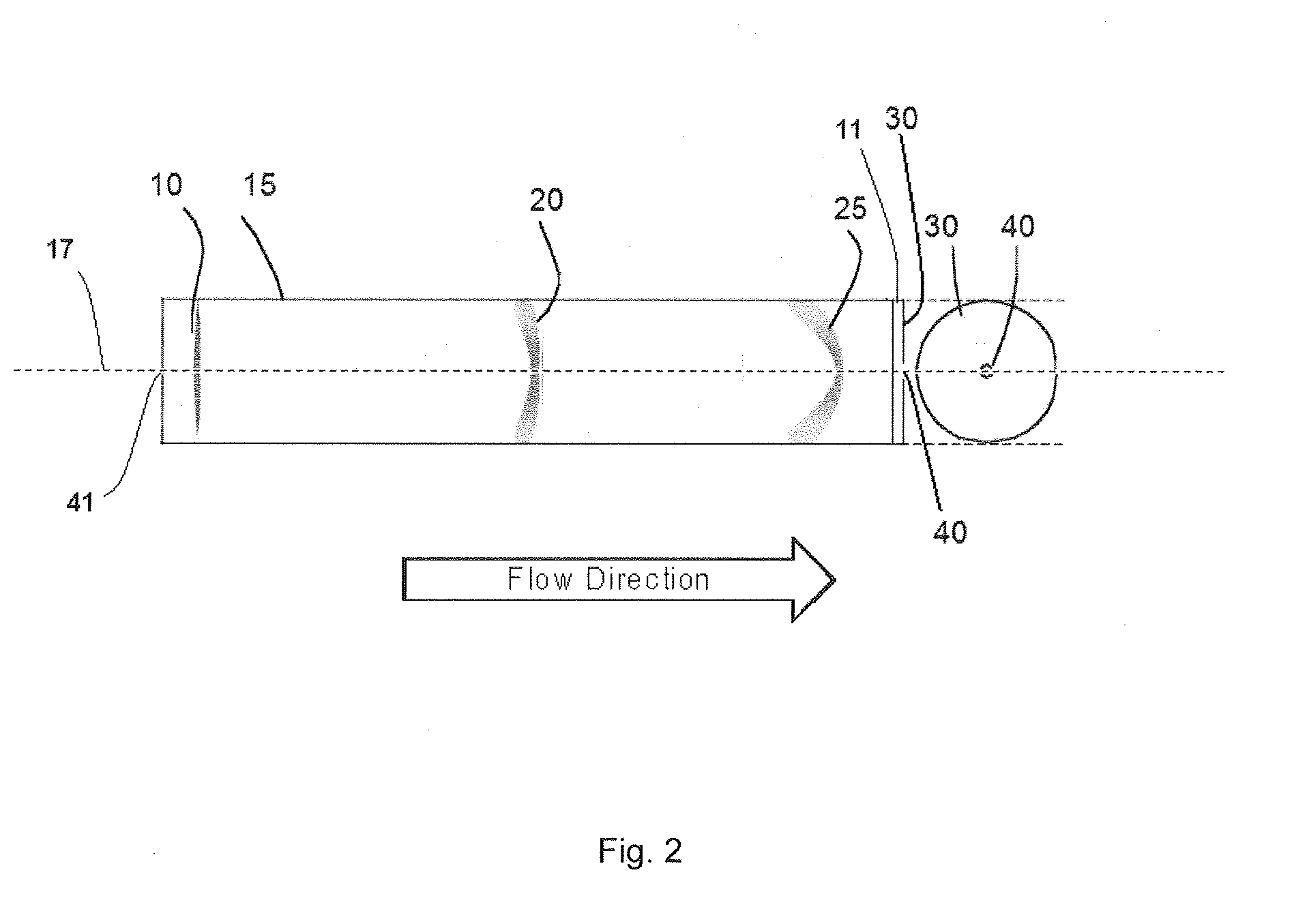Method and apparatus for improved resolution chromatography
- Summary
- Abstract
- Description
- Claims
- Application Information
AI Technical Summary
Benefits of technology
Problems solved by technology
Method used
Image
Examples
examples
(2)
[0209]Further experiments were conducted to demonstrate the effect of a segmented inlet.
[0210]The experiments were conducted on a 100×21 mm steel column packed with 12 μm pentafluorophenyl-silica stationary phase particles. Various experiments testing the different column hardware configurations were undertaken on the same column, with head fittings interchanged as appropriate. The experiments conducted used: (1) conventional column (single inlet port and single outlet port); (2) conventional column inlet fitting (single inlet port) with segmented flow outlet fitting (4 ports: 1 central port and 3 peripheral ports); and (3) curtain flow column inlet fitting (4 ports: 1 central port and 3 peripheral ports) with segmented flow outlet fitting (4 ports: 1 central port and 3 peripheral ports). Injection of toluene, propyl benzene and butyl benzene, in a 30 / 70 water / methanol mobile phase (250 μL) was used to test performance for these three modes of operation. The results are described...
PUM
 Login to View More
Login to View More Abstract
Description
Claims
Application Information
 Login to View More
Login to View More - R&D
- Intellectual Property
- Life Sciences
- Materials
- Tech Scout
- Unparalleled Data Quality
- Higher Quality Content
- 60% Fewer Hallucinations
Browse by: Latest US Patents, China's latest patents, Technical Efficacy Thesaurus, Application Domain, Technology Topic, Popular Technical Reports.
© 2025 PatSnap. All rights reserved.Legal|Privacy policy|Modern Slavery Act Transparency Statement|Sitemap|About US| Contact US: help@patsnap.com



